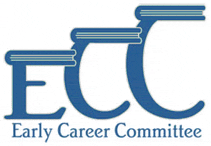In this month’s feature, the ECC Board asked their colleagues about the best methods and practices for making connections in the publishing industry.
“When you have the opportunity, ask lots of questions!!! Especially if you have landed a job (congrats) your boss is the perfect place to start, not just questions about the task at hand but about how the business works! And attend everything industry related you can, many times there are volunteer opportunities you may not even know about, and definitely join trade organizations like the Young to Publishing Group- it’s a great way to network with your peers, and meet other publishing professionals!” — Chrissy Noh, Marketing Director, Simon & Schuster Children’s Publishing
“When making connections in the industry, it’s helpful to meet people in a more social setting. At the start of my career, getting to know people on a personal level helped me make bonds throughout the industry that proved to be vital as I continued on my career path.” — Gillian Levinson, Assistant Director of Paperbacks & Publishing at Random House Children’s Books
“Have a natural conversation, maybe about similar books you’ve read (maybe slip in some books you’ve worked on) and/or TV shows or movies you’ve recently watched, etc–whatever it is that you can find common ground on. Be friendly, without the ulterior motive of just wanting to network for your career. You’ll be much more relaxed…and this is coming from an introvert!” — Marissa Finkelstein, Associate Production Editor, Little, Brown Books for Young Readers
“Truthfully, I’ve always found networking a bit nerve-wracking, especially when I was just starting out and shouting down my impostor syndrome on the regular. I think we tend to think of networking as taking place over one high-powered agent lunch or one scintillating conversation, but some of my most meaningful connections were made through more personal, regular interactions. It might be a congratulatory e-mail to an agent on an exciting new deal, or popping my head into a coworker’s office to say hello, or boosting an author’s gorgeous cover reveal. Don’t only reach out to someone when you have an agenda! It takes time to get to know someone and to build a relationship. It’s more valuable (and fun!) if you reach out to people with the goal of getting to know who they are, rather than what they can do for you. Frankly, we’re all a bunch of passionate book nerds, so we have a lot in common and chances are, we’ll get along!
There is a lot of emphasis on making the right contacts and getting to know who’s who, but you should also get to know your peers – they’ll become the high-powered editors, agents, and publishing professionals you work with! My network (and friend group!) is made up of the same editorial assistants, junior agents, and debut writers that I came up with. Along the same note, be generous with your time and always pay it forward! Offer to give notes on a submission, “proofread an e-mail real quick,” or make an introduction. I’m a big subscriber of shine theory (which applies to all genders) and believe that a rising tide lifts all ships.
Lastly, it’s okay to feel a bit overwhelmed at a crowded mixer or dread small talk. You should go outside your comfort zone, but you also don’t have to force yourself into uncomfortable situations. There’s no one way to network. I prefer getting to know people one-on-one, so I’ll often just give my card at an event so we can set up a call or a lunch later rather than shout at each other.” — Tiffany Liao, Editor at Henry Holt Books for Young Readers







